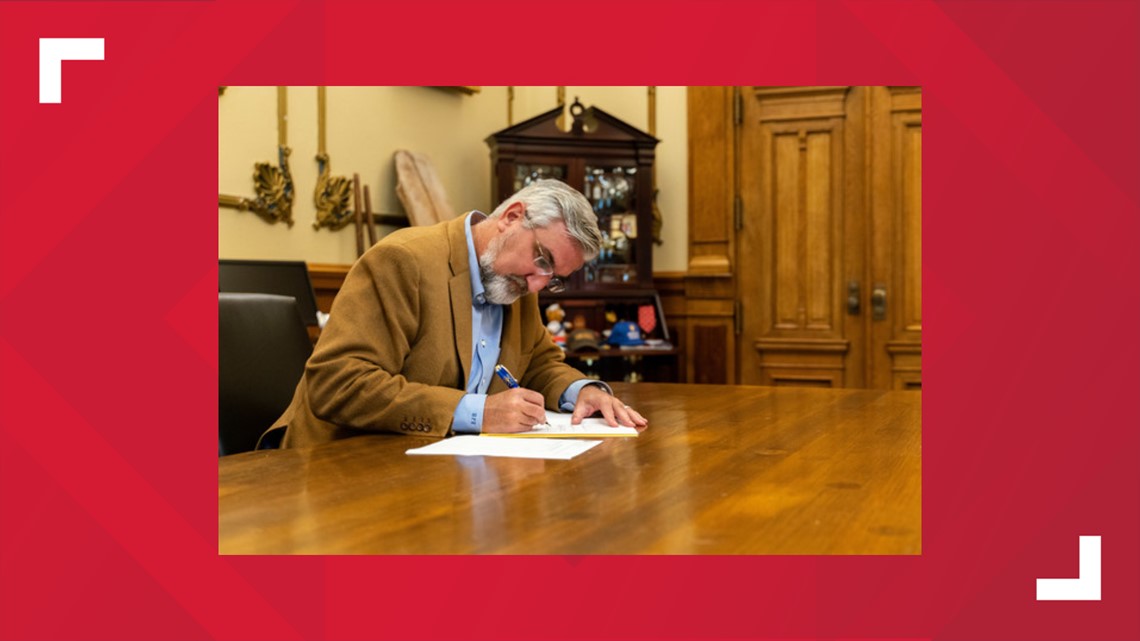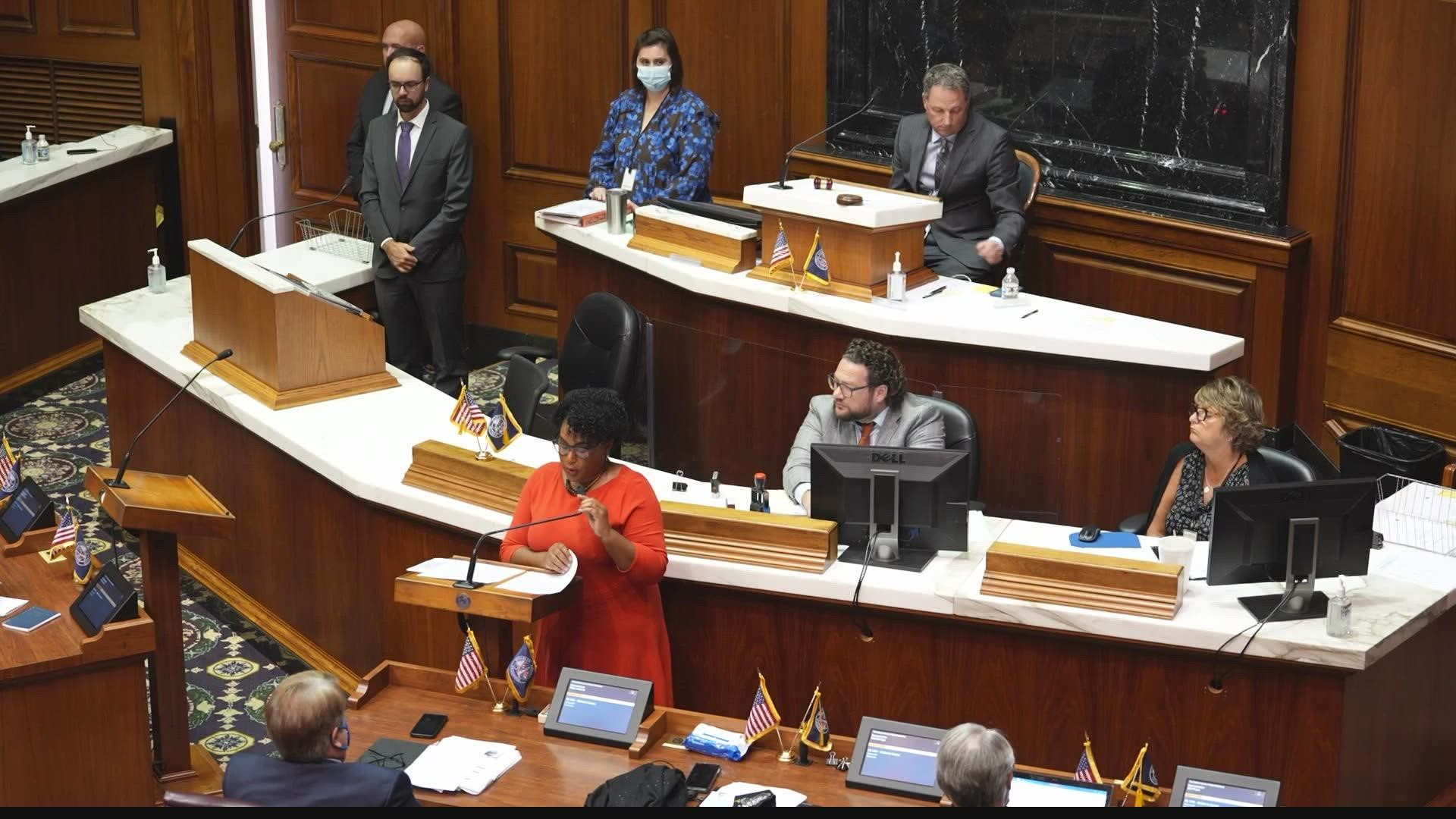INDIANAPOLIS — Indiana Governor Eric Holcomb signed House Bill 1581 Monday afternoon.
"Today I signed HB 1581, completing this once-in-a-decade constitutionally required process. I want to thank both the House and Senate for faithfully following through in an orderly and transparent way," Gov. Holcomb said. "And, a special thanks to every Hoosier who participated in the process by sharing their local perspective and input," Holcomb said.


“Now that the Indiana General Assembly has completed the important work of drawing Indiana’s Congressional and legislative districts, my office will begin the work of inputting the new maps into our systems,” Secretary of State Holli Sullivan said.
“While the drawing of district lines is done solely in the legislature, the Secretary of State’s office will continue to work as a conduit of information as the maps are made available to county clerks and election administrators in Indiana’s 92 counties,” Sullivan added.
Lawmakers at the Indiana Statehouse voted along party lines Friday to redraw the maps as part of an effort to keep Republicans in control of the state.
Tensions ran high inside the Statehouse with pleas to change Republicans' minds in the process of redistricting.
"It just shows you, people think we're playing games down here with this," said Sen. Tim Lanane, D-Anderson. "It's not a game. It's the most important vote we'll cast in the next ten years."
In the end, the vote seemed inevitable.
Both the House and Senate voted in favor of new boundaries for Indiana's congressional and state districts. The boundaries were drawn up by Republicans, who have the super majority.
"We met all the population requirements by state and federal law. Things are more compact, districts that keep communities of interest together, and you know, we took feedback from the public and used that feedback to form these maps," said House Speaker Todd Huston, R-Fishers.
These redistricted maps impact who Hoosiers can vote for and who will represent them in Congress and at the Indiana Statehouse.
The congressional map keeps 84 of the state's 92 counties whole and would also lead to a change in congressional district for the northern portion of Marion County, which could provide a boost for Republicans.
The state senate map increases the number of whole counties contained in one district from 49 to 65.
The Indiana House map would increase the number of counties that are wholly contained within one House district from 26 to 32, while also decreasing the number of townships that are represented by multiple House districts.
"The current maps fail to basically ensure that our elections are competitive and that our elections are fair," said Sen. Fady Qaddoura, D-Indianapolis.
Critics argue the new districts dilute minority voters, especially in urban areas.
"For example, in Evansville, they took the most densely minority population and split it between two senate districts," said Sen. Greg Taylor, D-Indianapolis.
"This isn’t a good day for Hoosiers or democracy," said State Rep. Cherrish Pryor (D-Indianapolis). "People already have a distrust for government and these maps will do nothing to change the status quo. These maps are drawn intentionally so the Republican Senators can be elected and continue to be elected without giving a care about what the Black Hoosiers in gerrymandered districts think. I think that is just sad, cruel and shameful."
Democrats said they wanted an independent redistricting commission.
"Sure, they meet the legal requirements as mentioned by my colleague, Sen. Koch, but the public was asking for so much more," said Sen. J.D. Ford, D-Indianapolis.
State Rep. John Jacob, R-Indianapolis, voted against party lines.
"We should be acting with justice. We should be acting impartially, and we know very well that these maps are not drawn impartially," Jacob said.
Still, many Republicans said they met constitutional obligations and have Indiana voters in mind.
"We have said all along that we were committed to drawing fair maps in a transparent way, and I believe we have done that," said Indiana Senate President Pro Tem Rodric Bray, R-Martinsville. "We prioritized keeping communities of interest together and drawing districts that make sense for the Hoosiers who live there, while maintaining nearly equal populations in each district. I believe these maps reflect feedback from the public and will serve Hoosiers well for the next decade."
"We wanted maps that looked compact people, saw their community together, represented the same way, and that's what our maps represent," Huston said.

